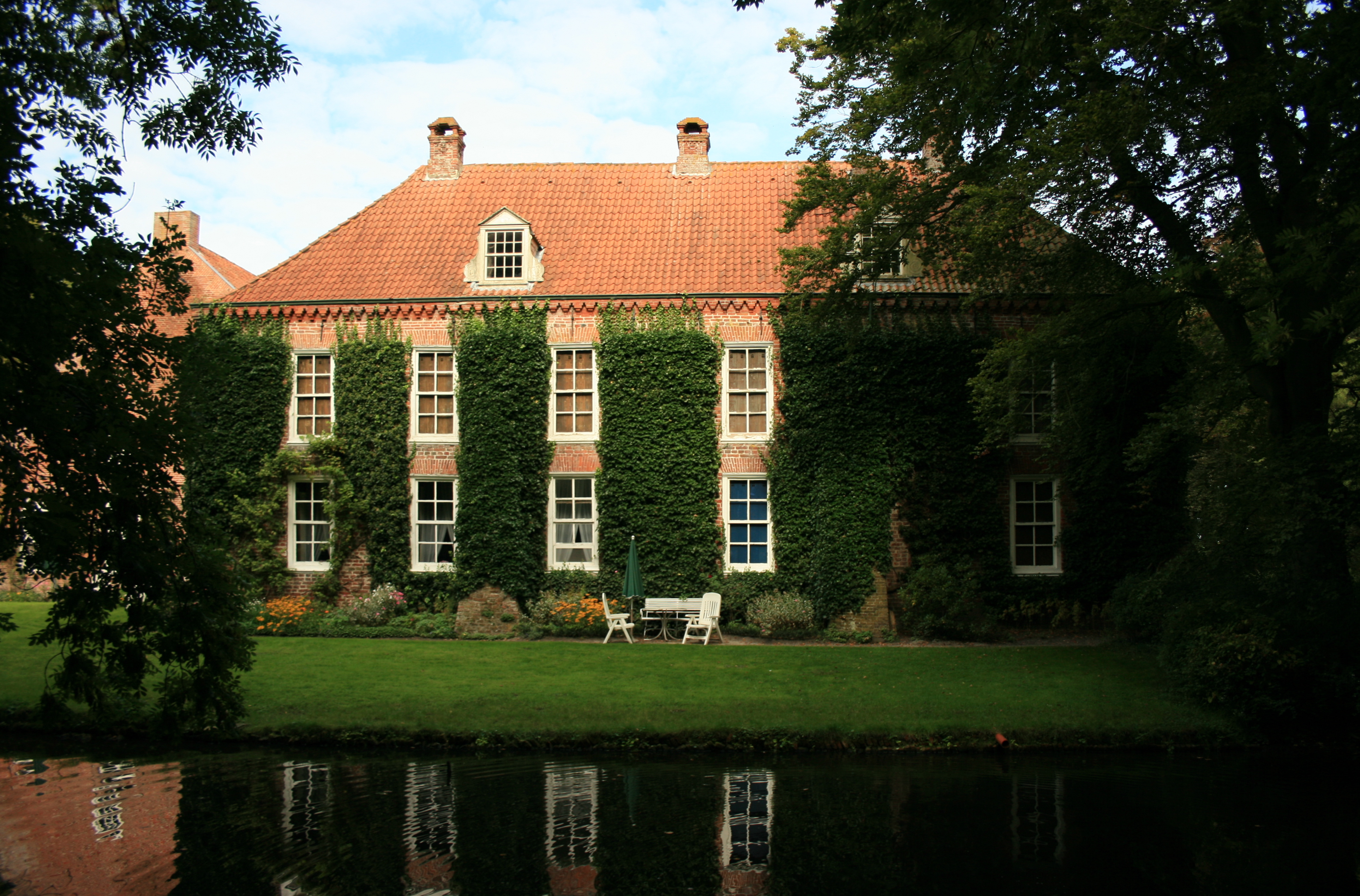Osterburg (Groothusen) on:
[Wikipedia]
[Google]
[Amazon]
The Osterburg is a castle from the
 The Osterburg, is surrounded by a
The Osterburg, is surrounded by a
Official page of the Osterburg in Groothusen
{{in lang, de Castles in Lower Saxony Krummhörn History of East Frisia Water castles in Germany
High Middle Ages
The High Middle Ages, or High Medieval Period, was the periodization, period of European history that lasted from AD 1000 to 1300. The High Middle Ages were preceded by the Early Middle Ages and were followed by the Late Middle Ages, which ended ...
in the village of Groothusen
Groothusen is an old ''Langwurtendorf'' - a village on an artificially-built ridge - in the municipality of Krummhörn in western East Frisia on Germany's North Sea coast. It lies about 15 kilometres northwest of the seaport of Emden and has a pop ...
in the municipality of Krummhörn
Krummhörn is a municipality in the district of Aurich, in Lower Saxony, Germany. It is situated near the Ems estuary, approximately 15 km southwest of Norden, and 10 km northwest of Emden.
The community (Gemeinde) of Krummhörn compr ...
, in the district of Aurich
Aurich (; East Frisian Low Saxon: ''Auerk'', West Frisian: ''Auwerk'', stq, Aurk) is a town in the East Frisian region of Lower Saxony, Germany. It is the capital of the district of Aurich and is the second largest City in East Frisia, both i ...
in Lower Saxony
Lower Saxony (german: Niedersachsen ; nds, Neddersassen; stq, Läichsaksen) is a German state (') in northwestern Germany. It is the second-largest state by land area, with , and fourth-largest in population (8 million in 2021) among the 16 ...
, Germany.
Location
The castles lies at the eastern end of theEast Frisia
East Frisia or East Friesland (german: Ostfriesland; ; stq, Aastfräislound) is a historic region in the northwest of Lower Saxony, Germany. It is primarily located on the western half of the East Frisian peninsula, to the east of West Frisia ...
n village next to a protected landscape
Protection is any measure taken to guard a thing against damage caused by outside forces. Protection can be provided to physical objects, including organisms, to systems, and to intangible things like civil and political rights. Although th ...
. Today it houses a large quantity of historical memorabilia.
History
The village of Groothusen was originally built on a long warft in the early Middle Ages and was an important trading centre and meeting place in the Frisian Emsigerland, as well as the provost office for 12 parishes. At that time, like many other places in Krummhörn, it was on the edge of a bay and was accessible to shipping. There were, in those days, three moated castles in the village: the Osterburg, Middelburg and Westerburg. Only the Osterburg - rebuilt in 1490 - has survived; the other two were destroyed byHamburg
(male), (female) en, Hamburger(s),
Hamburgian(s)
, timezone1 = Central (CET)
, utc_offset1 = +1
, timezone1_DST = Central (CEST)
, utc_offset1_DST = +2
, postal ...
forces during feuds in 1400 and 1432.
 The Osterburg, is surrounded by a
The Osterburg, is surrounded by a moat
A moat is a deep, broad ditch, either dry or filled with water, that is dug and surrounds a castle, fortification, building or town, historically to provide it with a preliminary line of defence. In some places moats evolved into more extensive ...
in the middle of a park with an old lime tree avenue. The oldest part is a long, two-story hall, which was built around 1490 by the chieftain family of Beninga. Around 1550 the castle was converted into a three-winged manor house, when two lower wings were built in front of the hall. In 1700 the right wing was demolished to make way for a Gulf farmhouse, which was built in 1707. The last structural change to the Osterburg was carried out in 1900, when a hallway was built in front of the hall. So the form of the original building cannot be easily seen from the front. From the rear of the building there is however a view of the original stage of construction.
Today the Osterburg houses a significant collection of cultural and art historical artefacts such as furniture, weapons, a library, items of Old East Frisian culture and a remarkable art collection of ancestral portraits from five centuries.
The castle is now owned by the descendants of the chieftain family of Beninga and may be visited in guided tours arranged by telephone. The left wing has been extended to create guest rooms, where bed and breakfast is offered.
Sources
* Kempe, Enno F. (1989). ''Die Osterburg zu Groothusen'' (Ostfriesische Kunstführer, Heft 12). Aurich.External links
Official page of the Osterburg in Groothusen
{{in lang, de Castles in Lower Saxony Krummhörn History of East Frisia Water castles in Germany